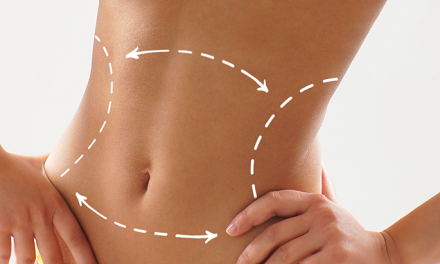At a time when social media and celebrity icons are driving increased demand for fuller, “pouty” lips, a natural-looking and harmonious appearance of the lips is perceived as most attractive, reports a study in the August issue of Plastic and Reconstructive Surgery®, the official medical journal of the American Society of Plastic Surgeons (ASPS).
Eye-tracking studies show that viewers actually spend more time looking at lips that are rated less attractive – suggesting that more attractive lips don’t mean increased attention, according to the new research by Sebastian Cotofana, MD, PhD, of the Mayo Clinic, Rochester, Minn., and colleagues. They write, “Visual attention, based on the results of this study, is not reflective of the beauty in the image assessed; rather the opposite.”
“Perceived beauty matches the ‘internal standard’ effortlessly”
Starting with a stock photo of a young woman, the researchers created a set of digitally altered images representing a range of lip proportions (ratio of the upper lip to lower lip) and volumes. A panel of observers – mainly volunteers with no medical or aesthetic background, along with several plastic surgeons and dermatologists – rated the images for attractiveness. The researchers also used eye-tracking technology to assess what parts of the model’s face the raters were looking at, and how much time they spent looking at each area.
In the subjective assessments, a lip proportion of 1 to 1.6 (upper lip to lower lip) was rated as most attractive: average score of 4.21 out of a possible 5. The 1:1.6 proportion is widely accepted as the “golden ratio” for beautiful lips. By comparison, an image showing a fuller lower lip (1:2 ratio) was perceived as less attractive, with an average rating of 2.16 out of 5.
On assessment of lip volume, an image showing the model’s “non-augmented, natural volume” was rated most attractive: average score 4.56. In contrast, for an image showing the lips enlarged to 130% of their natural volume, the average rating was 1.56. The preference for a more natural-looking appearance “confirms previous investigations and current trends in aesthetic medicine,” Dr. Cotofana and coauthors write.
In the eye-tracking analysis, the raters actually spent less time looking at the lips rated as most attractive: those with a 1:1.6 ratio and 100% lip volume. In contrast, they spent more time looking at the images showing digitally altered lips.
Why would observers devote more attention to the features they found less attractive? It may reflect a potential mismatch between the observed image and the rater’s “internal standard” of beauty. “Visual stimuli that match the internal, socially influenced standard of beauty require less effort to be perceived,” according to Dr. Cotofana. “In contrast, visual stimuli that do not match the internal standard of beauty require more processing time – as reflected by involuntary eye movements as captured by eye tracking.”
Thus the findings question the assumption that viewers will spend more time looking at attractive parts of an image. The researchers add: “Rather, it could be reflective of the cognitive processing of the observers: less attractive content captures the observers attention more quickly, yet needs more time to be processed.”
The findings may have implications for understanding aesthetic trends and behavior – especially in the era of selfies and social media driving requests for cosmetic plastic surgery and noninvasive procedures, including lip enhancement procedures using dermal fillers.
While the findings may seem surprising, they are in line with current trends in aesthetic medicine and surgery – emphasizing a more natural result, without obvious signs that the person has undergone a procedure. “It can be now postulated that a ‘beautiful’ and ‘aesthetically pleasing’ outcome would fulfill such desired requirements where the patient is perceived by those around them with less cognitive effort,” Dr. Cotofana and coauthors conclude. “[T]he perceived beauty matches the ‘internal standard’ effortlessly.”
Plastic and Reconstructive Surgery® is published by Wolters Kluwer.
Click here to read “In Search of the Most Attractive Lip Proportions and Lip Volume: An Eye Tracking- and Survey-Based Investigation”
Article: “In Search of the Most Attractive Lip Proportions and Lip Volume: An Eye Tracking- and Survey-Based Investigation” (doi: 10.1097/PRS.0000000000009361)





